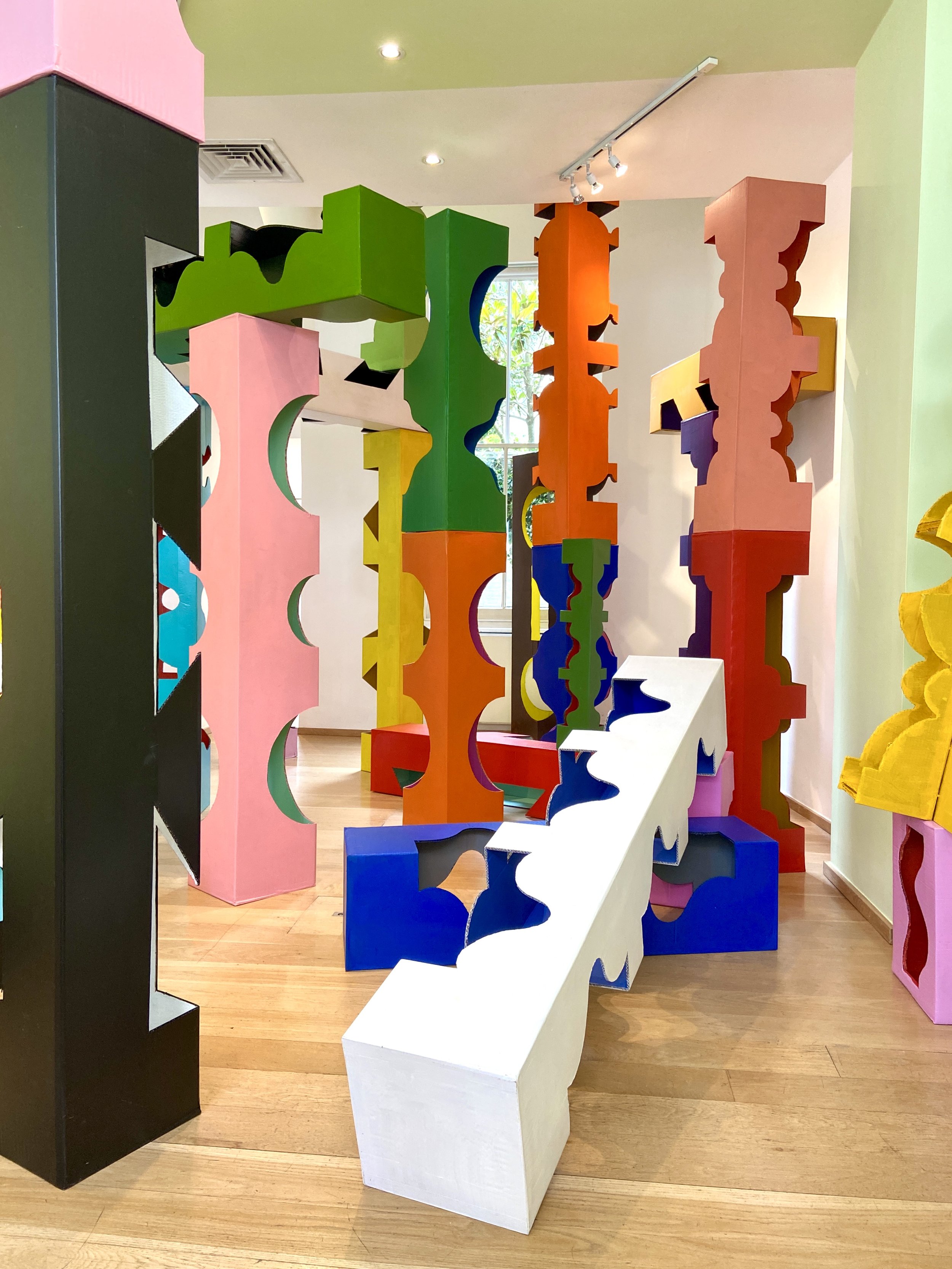What can be defined as temporary architecture? A pavilion, a temporary exhibition, a folly or a pop up? The urban environment has become home to numerous temporary architectural interventions. Often innovative and experimental, these sites can create an opportunity to question our understanding of both historical and contemporary architecture. ‘I Never Imagined It Could Be Like This’ is an exhibition of new work by British artist Jonathan McCree. It continues the long legacy of temporary architecture and how it opens up possibilities, challenging notions of what architecture could be and how we might act within it
Jonathan McCree
I Never Imagined It Could Be Like This, 2021
First Iteration
Throughout his career, Jonathan has repeatedly used sacred architecture as both location and subject matter in his practice; a Renaissance chapel in Northern Italy for ‘No Ground Under My Feet’ in 2013, the Asylum chapel in south London for ‘DAYS ON END’ in 2011 and a crypt underneath a north London church for ‘Revive’ in 2016. He also makes regular research trips to temples and shrines in India and Sri Lanka. Jonathan is interested in how as viewers we are meant to relate to sacred architecture. “Are we supposed to bow down in front of it, peer up at it? How are our bodies choreographed and how do the spaces feel, particularly if we are not sympathetic to the belief system underpinning them? I’m conscious of the effects on our emotions, bodies and our imagination.” Jonathan McCree, 2021
This interest is resonant with Jonathan’s childhood. He grew up within the community of the Christadelphian church. Jonathan talks of experiencing a blank, white, rectangular space totally lacking in spirit, imagination or visual substance. He describes his recent work as holding the paradox of memories that never existed, an attempt to escape and re-imagine the sterility and boredom of those early experiences. Jonathan’s interest in temporary structures, is something which opens up architectural possibilities. He proposes a flexible, changeable set up rather than something which is fixed and immutable, offering clues as to how we might think about the sacred as a more personally responsive notion.
For his recent exhibition ‘HIGH FOLLY’ with Sim Smith gallery in early 2021, Jonathan took a leap outside of the gestural, expressive paintings which characterise most of his work. Working with cut and folded cardboard, painted in semi-gloss, high key colour, Jonathan comments “I didn’t want to make three-dimensional versions of my paintings. I didn’t want to repurpose their expressive language.” These sculptures have a playfulness apparent not only in their colour and materials but also in the possibility for multiple configurations. Each iteration offers up a new experience of sculpture as more than the sum of its parts.
I NEVER IMAGINED IT COULD BE LIKE THIS is a new site-specific installation, where once again the sculptural elements have been constructed with prefabricated corrugated cardboard boxes. The work’s lightness and movability, speaks of Jonathan’s intentions and the idea that architecture can be seen as a temporary thing, changeable rather than fixed. Each sculpture operates both individually and as a playful component within an installation. During the exhibition, Jonathan will move the sculptural elements creating 2 or more installations. Meticulously painted with layer upon layer of thin pigment, the colours found on the inside of each sculpture contrast strikingly with the colour on the outside. These structures are reminiscent of Donald Judd’s work, industrial materials and processes which explore form, structure, colour, and surface.Working with cardboard has given Jonathan the opportunity to contemplate his making process, embracing the corrugated edges and uneven surface of this ordinary material and to think through the visual language of reductive geometry as well as the nature of repetition and industrial fabrication. “There is a logic to how the cardboard folds into a rectangle, the cut-out embellishments were a natural progression.” Jonathan McCree 2021 These cut-outs create sight lines through the sculptures, viewfinders in which to experience the work.
I NEVER IMAGINED IT COULD BE LIKE THIS will play with and reconfigure the gallery space. Suggestive of screens, altars, columns and even buttresses, the placement of each sculptural component, will choreograph our movement around the gallery. We are invited to step over pieces which lie horizontally on the floor and walk around the horizontal and vertical groups which lean against the walls. Upon entering the gallery, you are immediately immersed in Jonathan’s artwork. “Whereas my paintings sit on a wall, working with sculpture has meant my work shares a space with an audience.” Jonathan McCree, 2021
In a 1967 exhibition, German artist Charlotte Poseneske whose early sculptures were modules, which could be adapted according to available space, published instructions for the audience to ‘have fun’. It is that sense of fun and playfulness which can be found in Jonathan’s cardboard sculptures. “My playfulness is about creating a set of problems and impediments that are overcome for their own sake. There is an implicit challenge in these works which isn’t serious. They can be rearranged and if you change your mind, they can be changed again.” Jonathan McCree, 2021 I NEVER IMAGINED IT COULD BE LIKE THIS continues the long legacy of temporary architecture and how it opens up different possibilities, challenging notions of what architecture could be and how we might act within it.
About Jonathan McCree
Performance
Third Iteration
With a Soundscape by Paul Statham





























